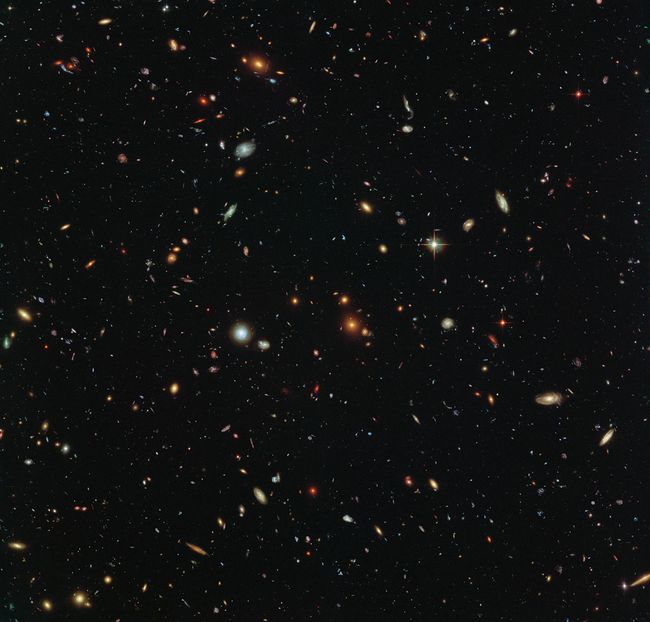- UID
- 20
- Online time
- Hours
- Posts
- Reg time
- 24-8-2017
- Last login
- 1-1-1970
|
|
━━━━━━━━━━━━━━━━━

(Image: © NASA/ESA Hubble Space Telescope)
▼ If you've ever dreamed of time traveling, just look out at the night sky; the glimmers you see are really snapshots of the distant past. That's because those stars, planets and galaxies are so far away that the light from even the closest ones can take tens of thousands of years to reach Earth.
The universe is undoubtedly a big place. But just how big is it?
"That may be something that we actually never know," Sarah Gallagher, an astrophysicist at Western University in Ontario, Canada, told Live Science. The size of the universe is one of the fundamental questions of astrophysics. It also might be impossible to answer. But that doesn't stop scientists from trying.
The closer an object is in the universe, the easier its distance is to measure, Gallagher said. The sun? Piece of cake. The moon? Even easier. All scientists have to do is shine a beam of light upward and measure the amount of time it takes for that beam to bounce off the moon's surface and back down to Earth.
But the most distant objects in our galaxy are trickier, Gallagher said. After all, reaching them would take a very strong beam of light. And even if we had the technological capabilities to shine a light that far, who has thousands of years to wait around for the beam to bounce off the universe's distant exoplanetsand return back to us?
Scientists have a few tricks up their sleeves for dealing with the farthest objects in the universe. Stars change color as they age, and based on that color, scientists can estimate how much energy, and light, those stars give off. Two stars that have the same energy and brightness aren't going to appear the same from Earth if one of those stars is much farther away. The farther one will naturally appear dimmer. Scientists can compare a star's actual brightness with what we see from Earth and use that difference to calculate how far away the star is, Gallagher said.
But what about the absolute edge of the universe? (▪ ▪ ▪)
► Please, continue reading this article here: Source |
|